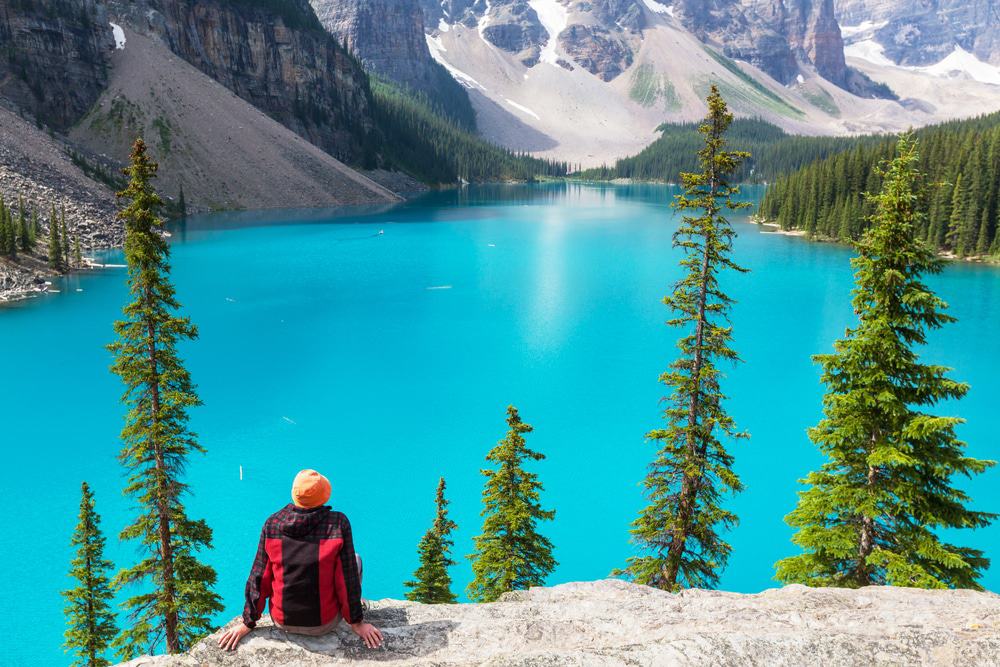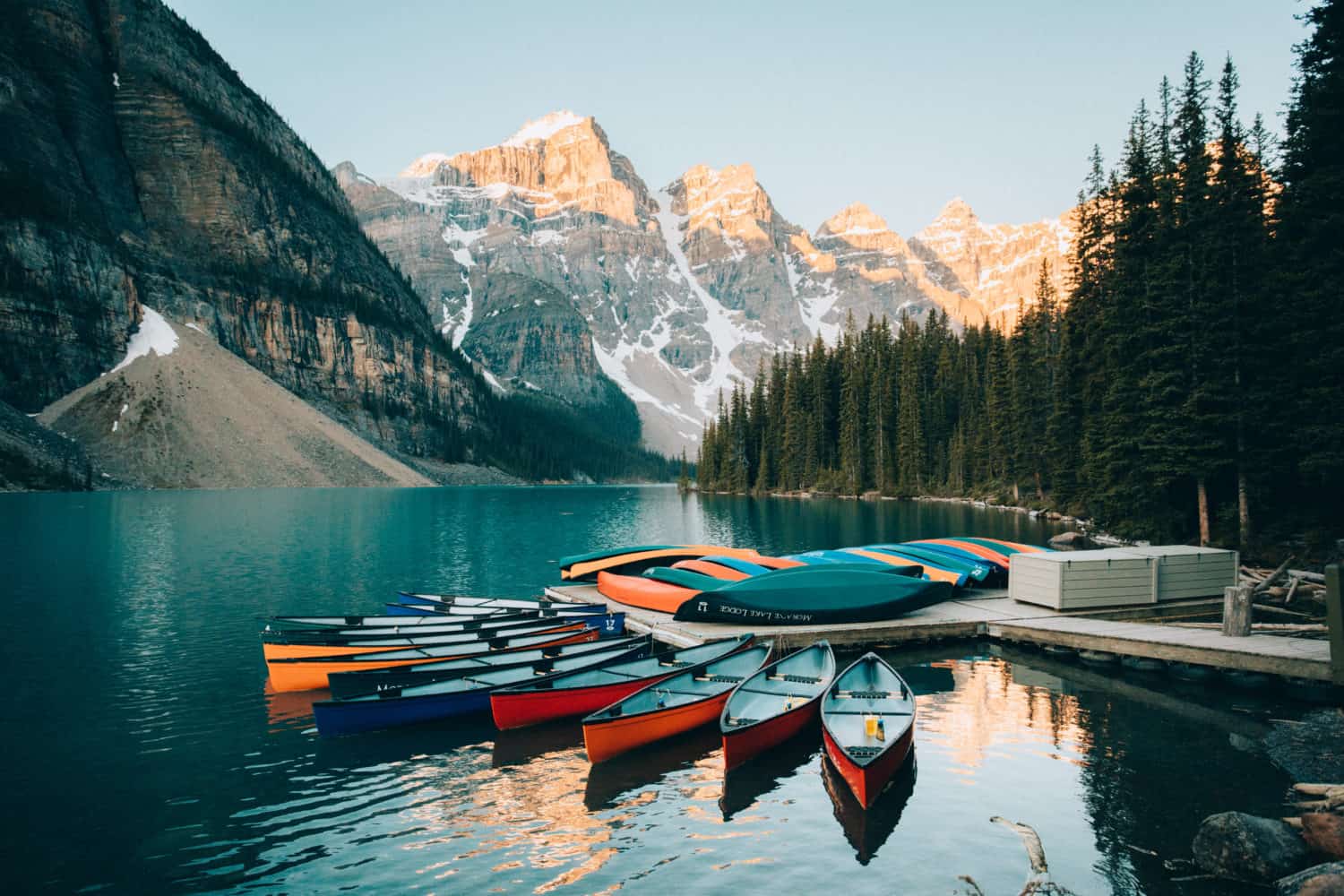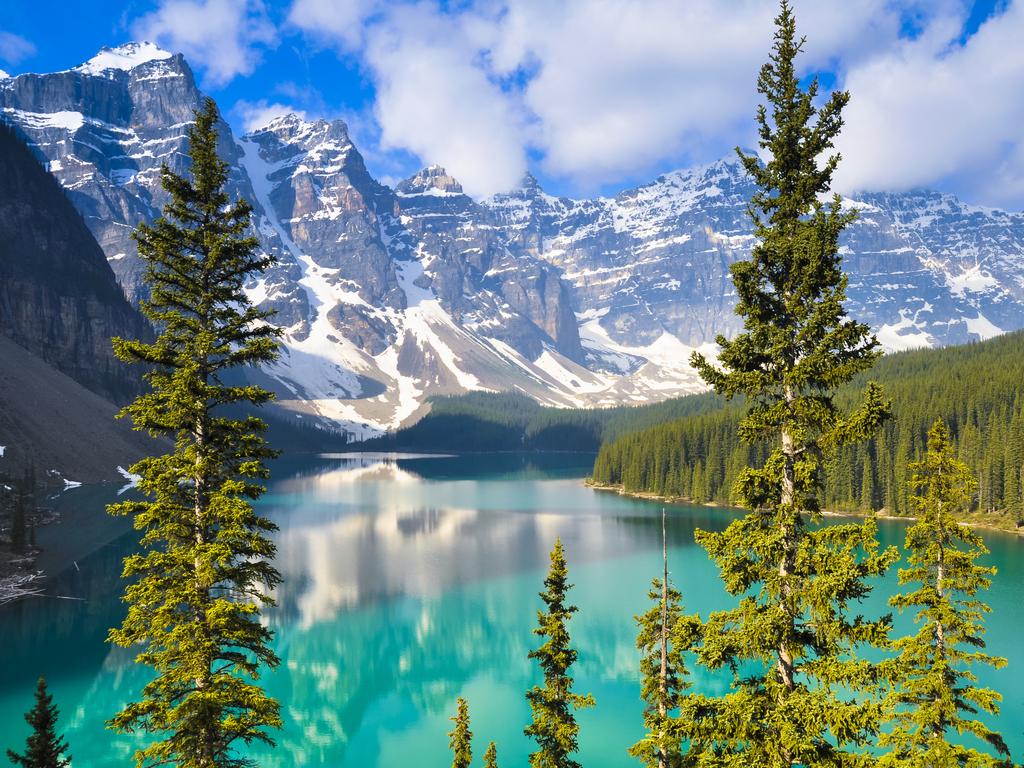
Canada, the world’s second-largest country, is a land of staggering natural beauty, vibrant cities, and a rich tapestry of cultures and histories. From the rugged coastlines of the Atlantic to the majestic peaks of the Rockies and the untamed wilderness of the Arctic, it offers an unparalleled diversity of experiences for every kind of traveler. This comprehensive guide will navigate you through Canada’s top attractions, delve into its fascinating history, provide essential travel tips, explore accommodation and transportation options, and pinpoint the best times to visit this magnificent nation.
The Land of Plenty: Canada’s Top Attractions
Canada’s vastness means its attractions are spread across six time zones and countless landscapes. Here’s a regional breakdown of some of its most iconic destinations:
Related Articles about Canada: A Land of Infinite Horizons and Unforgettable Adventures:
- The Land Down Under: An Epic Travel Guide to Australia
- The Rainbow Nation Beckons: Your Ultimate Travel Guide to South Africa
- The Pearl of the Orient Seas: A Comprehensive Travel Guide to the Philippines
- Yogyakarta: A Comprehensive Guide to the Soul of Java
- Switzerland: A Symphony of Peaks, Lakes, and Timeless Charm
1. Western Canada: Mountains, Coasts, and Urban Sophistication
- The Canadian Rockies (Alberta & British Columbia): Home to some of the world’s most spectacular mountain scenery, the Rockies are a UNESCO World Heritage site and a must-visit.
- Banff National Park: Canada’s first national park, famous for its turquoise lakes (Lake Louise, Moraine Lake), abundant wildlife, and charming mountain town of Banff. Activities include hiking, skiing, canoeing, and scenic drives like the Icefields Parkway.
- Jasper National Park: The largest national park in the Canadian Rockies, offering a wilder, less crowded experience. Highlights include the Columbia Icefield, Maligne Lake, and opportunities for stargazing in a dark sky preserve.
- Yoho National Park (BC): Nestled on the western slopes of the Rockies, known for Takakkaw Falls, Emerald Lake, and the natural bridge.
- Vancouver (British Columbia): A bustling, multicultural coastal city consistently ranked among the world’s most livable.

- Stanley Park: A massive urban park with a famous seawall perfect for cycling or walking, offering stunning views of the city, mountains, and ocean.
- Granville Island Market: A vibrant public market with artisanal foods, crafts, and street performers.
- Gastown: Historic district with Victorian architecture, gas lamps, and trendy boutiques.
- Victoria (British Columbia): The charming capital of BC, located on Vancouver Island, known for its British colonial heritage.
- Butchart Gardens: World-renowned floral display gardens.
- Inner Harbour: Bustling with activity, historic Empress Hotel, and legislative buildings.
- Whale Watching: Opportunities to spot orcas and other marine life in the Strait of Juan de Fuca.
- Whistler Blackcomb (British Columbia): North America’s largest ski resort, also a popular summer destination for mountain biking, hiking, and zip-lining.
2. The Prairies: Big Skies, Rich History, and Vibrant Cities
- Calgary (Alberta): A modern city at the doorstep of the Rockies, famous for its annual Calgary Stampede, "The Greatest Outdoor Show on Earth," a celebration of cowboy culture.
- Edmonton (Alberta): The provincial capital, home to North America’s largest shopping and entertainment complex, West Edmonton Mall. Also a gateway to northern adventures.
- Saskatoon (Saskatchewan) & Winnipeg (Manitoba): These cities offer a blend of cultural attractions, museums (like the Canadian Museum for Human Rights in Winnipeg), and access to the vast, serene landscapes of the Prairies, perfect for stargazing and experiencing the "big sky" country.
3. Central Canada: Urban Powerhouses, Historical Gems, and Natural Wonders
- Toronto (Ontario): Canada’s largest city and a global hub for finance, arts, and culture.
- CN Tower: Iconic landmark offering panoramic views, and the thrilling EdgeWalk.
- Distillery District: Historic Victorian-era industrial area converted into a pedestrian-only village of boutiques, galleries, and restaurants.
- Kensington Market: Bohemian neighborhood known for its vintage shops, street art, and diverse eateries.
- Niagara Falls (Ontario): One of the world’s most spectacular natural wonders, offering breathtaking views and experiences like the Hornblower Niagara Cruises (formerly Maid of the Mist) and Journey Behind the Falls. The surrounding Niagara-on-the-Lake region is renowned for its wineries.
- Ottawa (Ontario): Canada’s stately capital city, brimming with national institutions and history.
- Parliament Hill: Iconic legislative buildings, with the daily Changing of the Guard ceremony in summer and the impressive Peace Tower.
- Rideau Canal: A UNESCO World Heritage site, used for boating in summer and transformed into the world’s largest skating rink in winter.
- National Museums: A wealth of museums covering history, art, nature, and war.
- Montreal (Quebec): A vibrant, bilingual city blending European charm with North American dynamism.
- Old Montreal: Cobblestone streets, historic architecture, Notre-Dame Basilica, and the Old Port.
- Mount Royal Park: Designed by Frederick Law Olmsted (of Central Park fame), offering city views and recreation.
- Plateau Mont-Royal: Known for its distinctive spiral staircases, colourful homes, and lively atmosphere.
- Quebec City (Quebec): The only walled city north of Mexico, a UNESCO World Heritage site, and a living piece of European history in North America.
- Old Quebec: Explore the narrow streets, visit the iconic Château Frontenac, and walk the city walls.
- Plains of Abraham: Historic battlefield now a beautiful urban park.
- Montmorency Falls: A spectacular waterfall taller than Niagara Falls, just outside the city.
4. Atlantic Canada: Coastal Charm, Maritime History, and Rugged Beauty
- Halifax (Nova Scotia): A lively port city with a rich maritime heritage.
- Waterfront Boardwalk: Bustling with shops, restaurants, and historic ships.
- Citadel Hill: Historic fort offering panoramic city views.
- Peggy’s Cove: Iconic picturesque fishing village with a famous lighthouse.
- Cape Breton Island (Nova Scotia): Home to the stunning Cabot Trail, one of the world’s most scenic drives, winding along rugged coastlines and through Cape Breton Highlands National Park.
- Prince Edward Island (PEI): Canada’s smallest province, known for its red sand beaches, pastoral landscapes, and Anne of Green Gables lore.
- St. John’s (Newfoundland & Labrador): North America’s oldest city, vibrant and colourful, with a unique culture.
- Signal Hill: Historic site offering commanding views of the city and harbour, and the Marconi National Historic Site.
- Jellybean Row: Famous for its brightly painted houses.
- Iceberg Alley: In spring and early summer, witness magnificent icebergs floating past the coast.
5. Northern Canada: Wilderness, Indigenous Culture, and the Northern Lights
- Yukon, Northwest Territories, and Nunavut: Vast, sparsely populated regions offering unparalleled wilderness adventures.
- Northern Lights (Aurora Borealis): One of the best places on Earth to witness this magical phenomenon, especially from Yellowknife (NWT) or Whitehorse (Yukon).
- Klondike Gold Rush History: Explore Dawson City (Yukon) and relive the gold rush era.
- Wildlife Viewing: Opportunities to see polar bears, caribou, muskoxen, and other Arctic wildlife.
- Indigenous Culture: Deep immersion into the rich traditions and history of Canada’s First Peoples.
A Tapestry of Time: Canada’s Rich History
Canada’s history is as diverse as its landscape, spanning millennia and shaped by multiple cultures.
- Indigenous Roots: For over 15,000 years, diverse Indigenous peoples – First Nations, Inuit, and Métis – thrived across the land, developing complex societies, languages, and spiritual traditions. Their deep connection to the land and sophisticated knowledge shaped the continent long before European arrival.
- European Contact and Colonization: The first recorded European contact was around 1000 AD by Norse Vikings in Newfoundland. However, sustained European presence began in the late 15th and early 16th centuries with explorers like John Cabot and Jacques Cartier. France established New France in the 17th century, primarily along the St. Lawrence River, while the British claimed territories further south and east.
- French-British Rivalry: A long period of conflict between France and Britain culminated in the Battle of the Plains of Abraham (1759), leading to British control over New France. This laid the foundation for Canada’s bilingual and bicultural identity.
- Confederation: In 1867, the British North America Act united three British colonies (Province of Canada, Nova Scotia, and New Brunswick) into the Dominion of Canada, forming a federal parliamentary democracy. Over the next century, other provinces and territories joined, expanding Canada from "sea to sea to sea."
- 20th and 21st Centuries: Canada played significant roles in both World Wars, developed a robust social safety net, and became a strong advocate for multiculturalism. Today, it is known for its progressive policies, strong economy, and welcoming approach to immigration, making it one of the most diverse nations globally. Understanding this history enriches a visit, from the historic battlefields of Quebec to the vibrant Indigenous art found across the country.
Navigating the Great White North: Essential Travel Tips
Traveling in Canada requires some preparation, especially given its size and diverse climates.
- Visa and Passport: Most visitors require a valid passport. Depending on your nationality, you may need an Electronic Travel Authorization (eTA) for air travel or a visitor visa. Check official Canadian government websites well in advance.
- Currency: The Canadian Dollar (CAD) is the official currency. Credit cards are widely accepted, but it’s good to have some cash for smaller purchases or remote areas.
- Language: Canada has two official languages: English and French. While English is spoken almost everywhere, French is predominant in Quebec and parts of New Brunswick. Learning a few basic French phrases (Bonjour, Merci) is appreciated in French-speaking regions.
- Tipping: Tipping is customary in Canada for good service in restaurants (15-20% of the bill), bars, taxis, and for services like hairdressing.
- Connectivity: Wi-Fi is widely available in hotels, cafes, and public spaces. Canadian SIM cards are available from providers like Bell, Rogers, and Telus.
- Packing: Layering is key, regardless of the season. Even in summer, evenings can be cool. For winter, prepare for extreme cold with insulated outerwear, hats, gloves, and waterproof boots. Always bring comfortable walking shoes.
- Distances: Canada is enormous. Do not underestimate travel times. A road trip from Vancouver to Toronto, for instance, takes several days of continuous driving. Plan your itinerary realistically.
- National Parks: If you plan to visit multiple national parks, consider purchasing a Parks Canada Discovery Pass for cost savings.
- Safety: Canada is generally very safe, but common-sense precautions apply. Be aware of your surroundings, especially in urban areas, and secure your belongings. In wilderness areas, be mindful of wildlife (bears, coyotes, moose) and follow park guidelines.
- Healthcare: Travel insurance is highly recommended as healthcare can be expensive for non-residents.
Rest Your Head: Accommodation Options
Canada offers a wide spectrum of accommodation to suit every budget and travel style.
- Hotels: From luxurious five-star establishments in major cities (e.g., Fairmont, Four Seasons) to mid-range chains (e.g., Marriott, Hilton) and budget-friendly options (e.g., Super 8, Travelodge).
- Boutique Hotels & B&Bs: Charming, unique properties often found in historic districts or scenic towns, offering personalized service and local flavour.
- Vacation Rentals: Platforms like Airbnb and VRBO are popular, offering apartments, houses, and cottages, ideal for longer stays or groups.
- Hostels: A budget-friendly choice, especially in larger cities and popular tourist areas, offering dorms and private rooms.
- Camping & RV Parks: Canada is a camper’s paradise. National and provincial parks offer well-maintained campgrounds, often with facilities like washrooms, showers, and fire pits. RV rentals are a popular way to explore the country’s vast landscapes.
- Wilderness Lodges & Resorts: For a unique experience, particularly in the Rockies or Northern Canada, these offer remote luxury with activities like wildlife viewing, fishing, and hiking.
- Unique Stays: Consider an igloo hotel in Quebec, a treehouse in British Columbia, or a historic lighthouse stay in Atlantic Canada.
Getting Around: Transportation in Canada
Navigating Canada requires careful planning due to its immense size.
- Air Travel: For covering long distances (e.g., coast to coast, or between major regions), flying is often the most practical option. Air Canada and WestJet are the two largest domestic carriers, with regional airlines serving smaller communities.
- Rental Cars: Essential for exploring national parks, rural areas, and having flexibility. Book in advance, especially during peak season. Be aware of winter driving conditions if traveling between October and April, particularly in mountainous or northern regions, where winter tires are mandatory.
- Trains:
- VIA Rail: Canada’s national passenger rail service offers scenic routes, including transcontinental journeys. While slower than flying, it provides a comfortable and picturesque way to see the country.
- Rocky Mountaineer: A luxury tourist train offering breathtaking daylight journeys through the Canadian Rockies, known for its panoramic views and gourmet dining.
- Buses: Greyhound Canada (though scaled back) and regional bus lines offer inter-city travel, generally a more budget-friendly option than trains or planes.
- Ferries: BC Ferries is crucial for travel between Vancouver and Vancouver Island, and to other coastal communities in British Columbia. Marine Atlantic provides ferry service to Newfoundland and Labrador.
- City Transit: Major cities like Toronto, Montreal, and Vancouver have efficient public transit systems (subways, buses, streetcars) making it easy to get around without a car.
- Cycling: Canada has many scenic bike trails and routes, especially in urban parks and rural areas.
Timing Your Adventure: Best Time to Visit
Canada’s distinct four seasons offer different experiences, so the "best" time to visit depends on your interests.
-
Summer (June to August):
- Pros: Warmest weather, ideal for outdoor activities (hiking, camping, swimming, sightseeing). All attractions are open, and national parks are at their peak. Festivals abound in cities.
- Cons: Highest prices, largest crowds, especially in popular destinations like the Rockies and major cities. Requires booking well in advance.
- Best for: General sightseeing, outdoor adventures, coastal exploration, city breaks.
-
Autumn (September to October):
- Pros: Spectacular fall foliage, especially in Eastern Canada (Ontario, Quebec, Atlantic Provinces). Fewer crowds and milder temperatures than summer. Shoulder season prices can be more attractive.
- Cons: Weather can be unpredictable, with cooler temperatures and increased rain. Some attractions may begin to close towards late October.
- Best for: Scenic drives, hiking, wine tours (Niagara, Okanagan), photography, cultural events.
-
Winter (November to March):
- Pros: World-class skiing and snowboarding (Whistler, Banff, Mont Tremblant). Opportunities for unique experiences like ice skating on the Rideau Canal, dog sledding, snowshoeing, and witnessing the Northern Lights. Magical festive atmosphere around the holidays.
- Cons: Very cold temperatures, especially in the Prairies and North. Some roads may be closed, and travel can be challenging due to snow. Shorter daylight hours.
- Best for: Winter sports enthusiasts, Northern Lights viewing, cozy city breaks (Christmas markets), unique cultural experiences.
-
Spring (April to May):
- Pros: Thaw and blooming flowers, especially on the West Coast. Fewer crowds and lower prices than summer. Wildlife (like bear cubs) begins to emerge.
- Cons: Can be a transition period with unpredictable weather (rain, late snow). Some higher-elevation trails or attractions may still be closed.
- Best for: Budget travelers, city exploration, early hiking, seeing spring wildlife, maple syrup festivals in Eastern Canada.
Conclusion: Your Canadian Odyssey Awaits
Canada is a destination that promises adventure, tranquility, and cultural immersion in equal measure. Whether you dream of scaling mountain peaks, exploring historic cobblestone streets, witnessing the dance of the aurora borealis, or simply savoring a vibrant culinary scene, this vast and welcoming nation has something to offer. With careful planning and an open mind, your journey through Canada will undoubtedly be an unforgettable odyssey, leaving you with memories to last a lifetime. So pack your bags, prepare for incredible diversity, and get ready to discover the magic of the Great White North.






